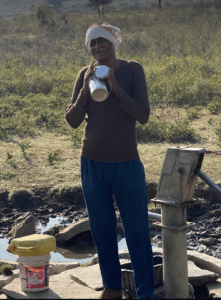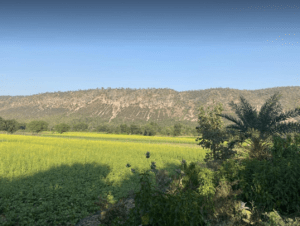Lesson Plan developed by Anubhooti Kabra (YHS Fulbright-Hays 2022)
 Proficiency Level: Intermediate High/ Advanced Low
Proficiency Level: Intermediate High/ Advanced Low
Age: Middle School; Time: 2x 75 minutes
Objectives: Students will be able to:
- name the panchtatva (five elements), describe them and their inter-relationships.
- ask questions about panchtatva and answer them in detail.
- explain about the role of panchtatva in their day-to-day lives.
- write a thank you note to a chosen panchtatva and explain why they chose it. Present it to the class.
Performance Assessment: Write a thank-you note to a chosen panchtatva. Orally explain to the class what the functions of the chosen panchtatva are and why you chose this specific one.
- Start with a salutation. …
- Get right to the point and express your thanks and explain why. …
- Mention a specific detail or two. …
- Look ahead. …
- Wrap it up with more gratitude and a warm sign off.
The class asks questions related to the presentation.
 Language Targets: Students will be able to use:
Language Targets: Students will be able to use:
- Vocabulary related to the relevant activities:
- Q: आप जल से क्या-क्या करते हैं?
- A: मैं जल से कपड़े धोती हूँ, मैं जल से सफ़ाई करता हूँ, मैं जल पीती हूँ
- useful phrases used in this context: subject + के काम आना or subject + oblique infinitive + के काम आना:
- Q :भूमि का तत्त्व आपके किस काम आता है ?
- A: भूमि का तत्व फसल उगाने के काम आता है, रहने के काम आता है, चलने के काम आता है, मेरी सारी क्रियाएँ करने के काम आता है।
- complex verbs with करना: की सफ़ाई करना vs. को साफ़ करना; की धुलाई करना vs. धोना; का प्रदूषण करना vs. को प्रदूषित करना
- adverbial expressions:
- (हवा) तेज़ चलना VS. धीरे चलना
- (पानी) तेज़ बहना vs. धीरे बहना
- (आग) तेज़ जलना vs. धीरे जलना
- (सूरज) तेज़ चमकना VS. धीरे चमकना
Vocabulary:
| प्रकृति f. – nature | ब्रह्मांड m. – universe | पंचतत्त्व m- 5 elements |
|---|---|---|
| भूमि f. – Earth | पृथ्वी f. – Earth | धरती f. – Earth |
| जल m. – water | पानी m. – water | नीर m. – water |
| आकाश m. – sky | गगन m. – sky | आसमान m.- sky |
| आग f.- fire | अग्नि f. – fire | हवा f. – air |
| वायु f. – air | ऊर्जा f. – energy | शक्ति F. – power |
| काम में लेना – to use | धन्यवाद देना – to say thank you | आदर करना – to respect |
| बचना vs. बचाना – to save | ध्यान रखना – to care for | बहना vs. बहाना – to flow |
| जलना vs. जलाना- to burn | उगना vs. उगाना – to grow |
उड़ना vs. उड़ाना – to fly |
| X को अच्छा लगना | X पसंद करना vs. X को पसंद होना | X से डरना vs. X को X से डर लगना |
Learning Episodes:
- Students brainstorm about what the building blocks of nature are. Students make a word list. The teacher draws attention to the main elements.
- The teacher introduces the Indian philosophy of panchtatva and how the universe is created with them. (Interpretive). The teacher shows video of Jalpurush about panchtatva. In pairs students create a concept map.
- The teacher shows a picture of a crop in a field and asks students (think-pair-share) which elements have contributed in growing that crop. (Interpersonal)

- Students work in pairs to discuss and write a list of how each panchtatva is a part of their day-to-day life. At least 10 sentences in total and at least one sentence about each tatva. (Interpersonal – speaking and presentational writing). Students complete the written task at home.
Sample sentences:
- पानी से हम नहाते हैं ।
- हवा से हम साँस लेते हैं ।
- भूमि पर हम फसल उगाते हैं ।
- Students sit in groups or break-out rooms to discuss a product (e.g. झोंपड़ी, फ़ोन) or activity of their choice and (e.g. फ़सल उगना, बरतना धोना)) – how the elements have come together to fashion this product. Each group makes a list of elements for each product. Then they count the frequency of occurrence of each element and compare with other groups figure out the most common element that has been used in products. (Interpersonal)
| भूमि | जल | वायु | अग्नि | आकाश | |
| वस्तु / क्रिया 1 | |||||
| वस्तु / क्रिया 2 | |||||
| वस्तु / क्रिया 3 | |||||
| योग |
After filling the table, the teacher points out the interconnectedness of elements, which can be discussed further (depends on level of readiness).
- Students listen to a folk song and follow the lyrics (handout). They mark on the handout what is relevant to villagers’ lives: Song from Karauli, Rajasthan (video and lyrics)
हम पानी रोकने का करें जतन – लेखक और गायक रामरूप गुर्जर
|
|
Glossary:
| यतन m. colloq. – effort | धन m. – money | रतन m. – gem |
|---|---|---|
| नारा m. – slogan | धारा f. – current | तरुण adj. – young |
| दूजा adj. – another | साथी m. – friend | नाती m. – daughter’s son |
| कहन v. colloq. – to say | ताल-तलैय्या m. – pond | ता-ता-थैय्या m- dance |
| सुहाना adj. – pleasant | वतन m.- country | थाली f. – plate |
| हरियाली f. – greenery | मगन adj. – happy | उगलना v. – to spew |
| गहना m. – jewelry | भवन m. – house, mansion | जतन m. colloq. – effort |
- Students write a thank-you note and give a speech on their favorite element and why they think it is the most important one. At least 2 paragraphs and 15+ sentences.
For Homework: Students talk to their parents/ relatives to find out the ways in which any tatva is acknowledged or given thanks to, in their own culture. Students then, using 5 Ws (Who, What, When, Where, Why) and 1 H (How), show and tell either by bringing that product in the class (by making a video or ppt if not possible to bring) and show to the class. At least 15 sentences. (Presentational – speaking). Q&A follow.
Sample phrases: सूरज को जल चढ़ाना, दीपक जलाना, आदि